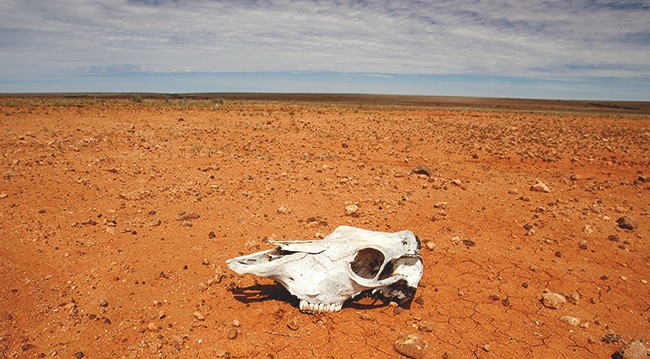Property group Stockland altered its governance processes to allow for the continuous monitoring and assessment of climate risk. What steps should your board take?
In the aftermath of Cyclone Marcia in February 2015, the car park of Stockland’s Rockhampton shopping centre was utilised as a temporary field hospital. It was a powerful reminder of how projections for more potent weather events were already beginning to affect the Australian listed property group’s portfolio. Like a number of companies, Stockland had been considering climate change risk for more than a decade. But Marcia’s impact instigated a new approach. “It started us doing deeper investigations and looking at climate change planning from a technical as well as a community perspective,” says Mark Steinert, Stockland CEO and managing director.
In February 2018, the company started reporting its climate change risk management in line with recommendations from the UK Financial Stability Board’s Task Force on Climate-related Financial Disclosures (TCFD, see breakout). Stockland was the first property company in Australia to report its climate change risk profile this way. Its 2018 climate risk report has a number of potential risk scenarios ranging from property/reputational damage and development hold-ups to increased energy and supply chain costs.
According to a recent (February) analysis by activist investment group Market Forces, a handful of ASX 100 companies have reported in line with the TCFD recommendations as at December 2018. Of 72 ASX 100 companies operating in sectors it considered to have higher climate risk, it found three companies — South32, AGL and Stockland — disclosing in line with all recommendations of the TCFD. BHP, Westpac, CBA, ANZ and Dexus each come close to fully satisfying the recommendations, while Macquarie Group is among the companies committed to addressing all recommendations in their 2019 reporting.
In a broader Australian context, TCFD reporting could enable more uniform reporting of material climate risks in a more consistent fashion. The updated commentary to recommendation 7.4 of the fourth edition of the ASX Corporate Governance Council’s Principles and Recommendations states: “A listed entity should disclose whether it has any material exposure to environmental or social risks and, if it does, how it manages or intends to manage those risks.”
It now notes: “The council would encourage entities to consider whether they have a material exposure to climate change risk by reference to the recommendations of the Financial Stability Board’s Task Force on Climate-related Financial Disclosures and, if they do, to consider making the disclosures recommended by the TCFD.”
Davina Rooney, Stockland’s general manager of sustainability and corporate procurement, says regulators have been calling down global financial frameworks and urging the market to transition.
“This is clearly the instrument to do that,” she says. “It’s not a finished journey, but having a coherent framework to navigate this transition phase and meaningfully plan the next steps, that’s what is most important.”
The TCFD reporting structure also serves as a checklist for companies considering their climate risk. And when considering that companies evolve, “nothing sharpens the mind like a good, strong risk disclosure,” says Rooney. “For example, since 2018, we’ve started to look more closely at our transition risk, and transition risk is a requirement of TCFD. These frameworks help in tangible ways — you might have a leadership position in some areas [of climate risk] but not consistently across the board. The TCFD drives that consistency.”
Acting, measuring and reporting
In 2006, Stockland set out a Climate Change Action Plan, primarily concerned with monitoring and reducing carbon emissions, while also looking at adaptation, innovation and communication strategies. In 2011, the company developed a Climate Adaptation Strategy that began to chart the changing risk profile that climate change was bringing to its asset base with events such as flooding, bushfires and rising sea levels. The modelling was then used, as the company explained to the global Carbon Disclosure Project, to “help inform decisions about the type of action, timing and specific assessments… to prepare for changes in the climate”.
Its TCFD report is the next step in that evolution of reporting. It will be integrated into Stockland’s annual report, noting how the company has approached climate change risk management in its governance, strategy, risk management and metrics. This format is recommended by the UK task force so companies can voluntarily report their “physical, liability and transition risks associated with climate change” in a globally consistent and comparable manner. The task force also hopes companies can “align their disclosures with their investors’ needs” while giving investors, lenders, insurers and other financial market players the information needed to more fully understand a company’s climate change risk and opportunity profile.
Stockland chair Tom Pockett MAICD explains: “It is necessary for the board to understand the ways issues such as climate change impact the organisation’s ability to grow and provide sustainable returns for investors. It is also important we see meaningful progress on our internal, evidence-based targets to reduce emissions intensity; mitigation of risk at both the group and asset level; and up-to-date knowledge as climate science evolves.”
At a more detailed level, Rooney says the clarity gained from these strategies allows the company to connect more closely with its assets and end clients. “We pulled out a customised climate adaptation strategy to help increase our understanding of climate trends and scenario analysis on the physical risks for our portfolio,” she says. “The aim is to make our portfolio and communities more resilient to climate change.”

Getting the governance right
Stockland’s governance structures have played a large role in its transition to more sophisticated climate risk assessments. “The first step in identifying your risk is ensuring you have whole-of-business engagement,” says Rooney. “You need to enable and embed that in the governance of how you manage risk as an organisation. We manage risk through our risk framework reporting into our CFO, but it’s critical to have the alignment and understanding of that function. Climate change risk is multifaceted, and working collaboratively across a portfolio unlocks opportunities that might arise, such as creating large solar projects.”
Stockland’s board is informed about climate risk via two key channels — the risk committee, which considers climate change as a key enterprise risk, and the sustainability committee, which looks at carbon mitigation, climate and community resilience, and emerging climate regulation.
This evolution of Stockland’s governance means every director is now also part of the sustainability committee. “Where we once had a standalone sustainability subcommittee, we now have a full board sustainability subcommittee,” says Steinert,
“The reason we made it a subcommittee of the board rather than a standalone committee was ultimately because, from a risk and a company purpose/strategy point of view, we decided [climate risk] was so material that every board member had to be across it rather than just a sub-group.”
Rooney believes that ensuring directors and the executive management team have a broad understanding of climate risk is crucial. “Supporting your board and taking them on a journey as you enhance your understanding can bring different perspectives and really tap into some of the broader knowledge that your board has,” she says.
As climate science has evolved, so too have the tools to assess climate risk. Stockland now undertakes a national mapping exercise across its portfolio as the first step in understanding their exposure. In collaboration with expert external consultants, this process uses tools such as catastrophe modelling to identify and prioritise vulnerabilities in the portfolio based on different climate scenarios, asset locations and experiences in managing climate impacts. “In areas of high exposure to climatic events of assets we operate, we conduct an extra layer of climate risk assessment involving detailed appraisal,” says Rooney.
“An example of this is the additional reviews of building envelopes to understand opportunities to enhance protection from cyclonic wind events in North Queensland retail.” For Steinert, having an eye to climate risk is part of a broader approach to sustainability. “We seek to build communities that are liveable, affordable and sustainable, and we do that because ultimately we believe those communities will thrive or sustain growth into the future,” he says.
Weather report
Two recent documents could be helpful for directors in understanding their reporting responsibilities and obligations in regard to climate change risk.

Hutley opinion
In late March, Noel Hutley SC and Sebastian Hartford-Davis released a supplementary memorandum of opinion on climate risk and directors’ duties. It addressed a number of relevant developments since the initial opinion was released in 2016. That opinion argued that courts would likely view climate change risks as foreseeable business risk and, as such, relevant to directors’ duty of care and diligence.
The memorandum emphasised five material developments since 2016 that have elevated the need for directors to consider climate risks and opportunities, and reinforces the urgency of improved board-level governance of this issue. These include: the alignment of regulators on the financial and economic significance of climate change; a more acute investor focus; climate risk reporting initiatives; advances in scientific knowledge; and litigation risk.
The memorandum concluded there are now significant and well-publicised risks associated with climate change and global warming that would be regarded by a court as foreseeable.
The opinion highlighted three advances in reporting frameworks relevant to the disclosure of climate risk. These include the final recommendations of the Taskforce for Climate-related Financial Disclosures (TCFD); new recommendations on assessing climate risk materiality from the Australian Accounting Standards Board and the Auditing and Assurance Standard Board; and updated guidance on climate disclosures from the ASX Corporate Governance Council.
ASIC report
The Australian Securities and Investments Commission (ASIC) report, Climate Risk Disclosure by Australia’s Listed Companies, released in September 2018, reviewed climate risk disclosures by 60 listed companies in the ASX 300, 25 recent initial public offering (IPO) prospectuses, and 15,000 annual reports. The report made several high-level recommendations (summarised below) to assist directors in developing their climate disclosure practices.
Consider climate risk
Directors need to include climate risk as part of understanding and continually reassessing existing and emerging risks. Directors should consider the TCFD’s final report, which is as a useful reference for climate risk governance.
Strong and effective corporate governance
When climate risk is material, consideration should be given to disclosing the company’s governance and risk management practices around climate risk.
Comply with the law
ASIC considers the law to require an operating and financial review disclosure should include a discussion of climate risk when it could affect the entity’s achievement of its financial performance or disclosed outcomes.
Disclose useful information to investors
The voluntary disclosure recommendations issued by the TCFD are specifically designed to help companies produce information that is useful for investors. ASIC recommends that listed companies with material exposure to climate risk consider reporting under the TCFD framework. Regardless of whether TCFD reporting is adopted, where appropriate, listed companies should assess and disclose climate risk with reference to the broad categories formulated by the TCFD: physical and transition risk. ASIC also recommends that listed companies consider disclosing climate separately to other general risk categories.
Latest news
Already a member?
Login to view this content


